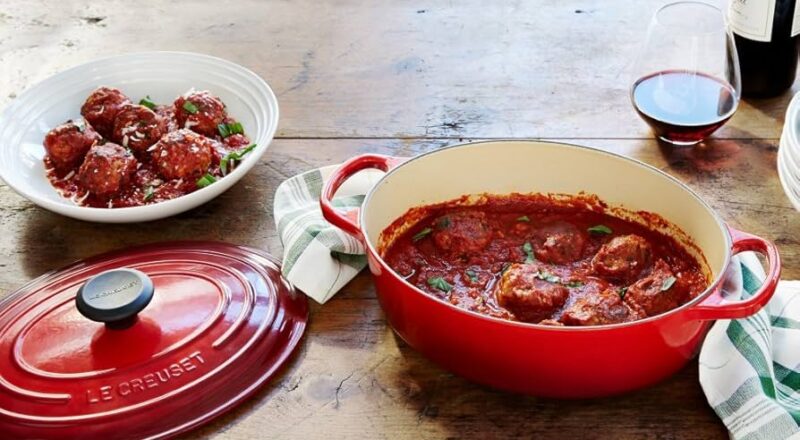Cooking vegetables perfectly can be an art, and knowing how to braise vegetables in cast iron can elevate your culinary skills to a professional level. Braising is a cooking method that combines both dry and wet heats, which helps in bringing out the rich flavors of vegetables. In this article, we will guide you through the process of braising vegetables using a cast iron skillet or braiser, ensuring you achieve the desired tenderness and taste.

What is Braising?
Braising is a cooking technique that involves searing food at high temperatures and then simmering it in a liquid over low heat. This method is particularly suited for vegetables as it allows them to absorb the flavors of the broth or sauce, creating a delicious and tender dish.
Why Use Cast Iron?
A cast iron skillet or braiser is ideal for braising because it retains and evenly distributes heat. This ensures that the vegetables are cooked evenly, preventing any parts from being over or undercooked. Additionally, cast iron imparts a unique flavor to the food, enhancing the overall taste of the dish. Learn more about the flavor impact of cast iron.
Choosing the Right Vegetables
Not all vegetables are suitable for braising. Root vegetables such as carrots, potatoes, and parsnips, as well as hearty greens like kale and cabbage, are excellent choices. These vegetables hold up well to long cooking times and absorb flavors beautifully.
Preparing the Vegetables
Before you start braising, it is crucial to prepare your vegetables properly. Wash and peel them if necessary, and cut them into uniform pieces to ensure even cooking. Season them with salt and pepper for enhanced flavor.
Seasoning and Searing
Begin by heating your cast iron skillet or braiser over medium-high heat. Add a small amount of oil, and once it’s hot, add the vegetables. Sear them until they develop a golden-brown crust. This step adds depth to the flavor profile of your dish.
Adding Liquid
Once the vegetables are seared, it’s time to add the cooking liquid. This can be anything from vegetable broth, wine, or even water. The liquid should come about halfway up the sides of the vegetables. Cover the skillet or braiser, and reduce the heat to low. Allow the vegetables to simmer slowly.
Slow and Steady Cooking
Braising is all about slow and steady cooking. Allow the vegetables to cook until they become tender and absorb the flavors of the liquid. This can take anywhere from 20 to 45 minutes depending on the type and size of the vegetables.
Finishing Touches
Once the vegetables are cooked, you can remove the lid and increase the heat to let the liquid reduce slightly, concentrating the flavors. Before serving, taste and adjust the seasoning as needed.
Useful Tips for Braising in Cast Iron
- Preheat your cast iron skillet or braiser before adding vegetables to ensure even cooking.
- Use a tight-fitting lid to trap steam and moisture during braising.
- Experiment with different herbs and spices to add complexity to your dish.
Common Mistakes to Avoid
Avoid overcrowding the pan, as this can lead to uneven cooking. Also, be patient and allow the vegetables enough time to cook slowly to achieve the best results.
Benefits of Braising Vegetables
Braising not only enhances the flavor of vegetables but also preserves their nutrients, making it a healthy cooking choice. It is a versatile method that can be used for various dishes, from side dishes to main courses.
Pairing Braised Vegetables
Braised vegetables can be served as a side dish or incorporated into other recipes. They pair wonderfully with meats, grains, or can be enjoyed on their own.
Exploring More Cooking Techniques
If you enjoy braising, you might want to explore other cooking techniques that utilize cast iron, such as frying. Discover the differences between using a cast iron braiser for frying.

FAQ
Can I braise vegetables without oil?
Yes, you can use broth or water as a substitute for oil, although oil helps in achieving a better sear.
How do I clean my cast iron after braising?
Allow the skillet to cool slightly, then wash it with warm water and a brush. Avoid using soap, and dry it thoroughly to prevent rusting.
Can I use a cast iron braiser for other cooking methods?
Absolutely! A cast iron braiser is versatile and can be used for roasting, baking, and even frying. Check out the differences between braisers and multicookers.
For more inspiration and recipes, you can visit Epicurious.
This article contains affiliate links. We may earn a commission at no extra cost to you.

